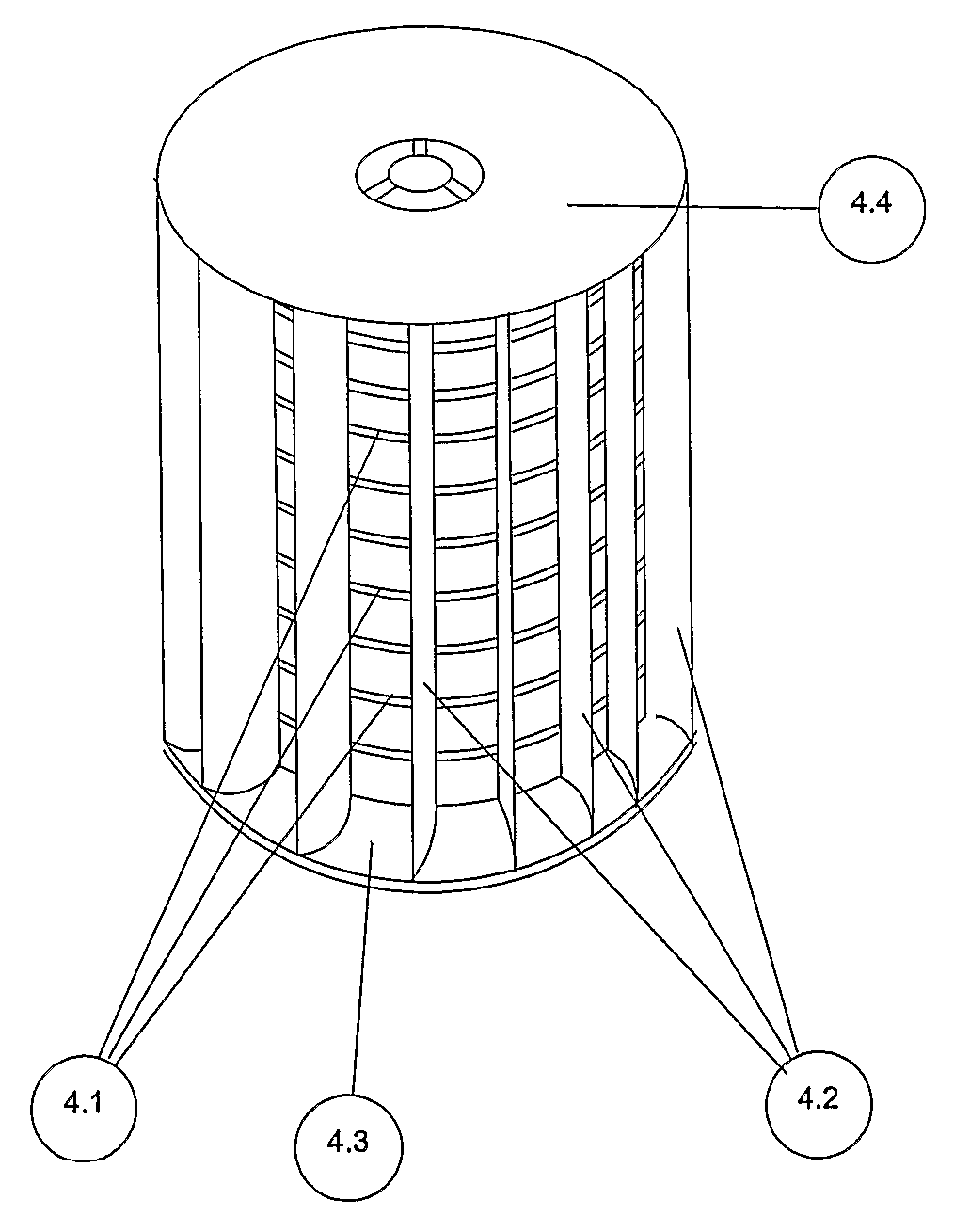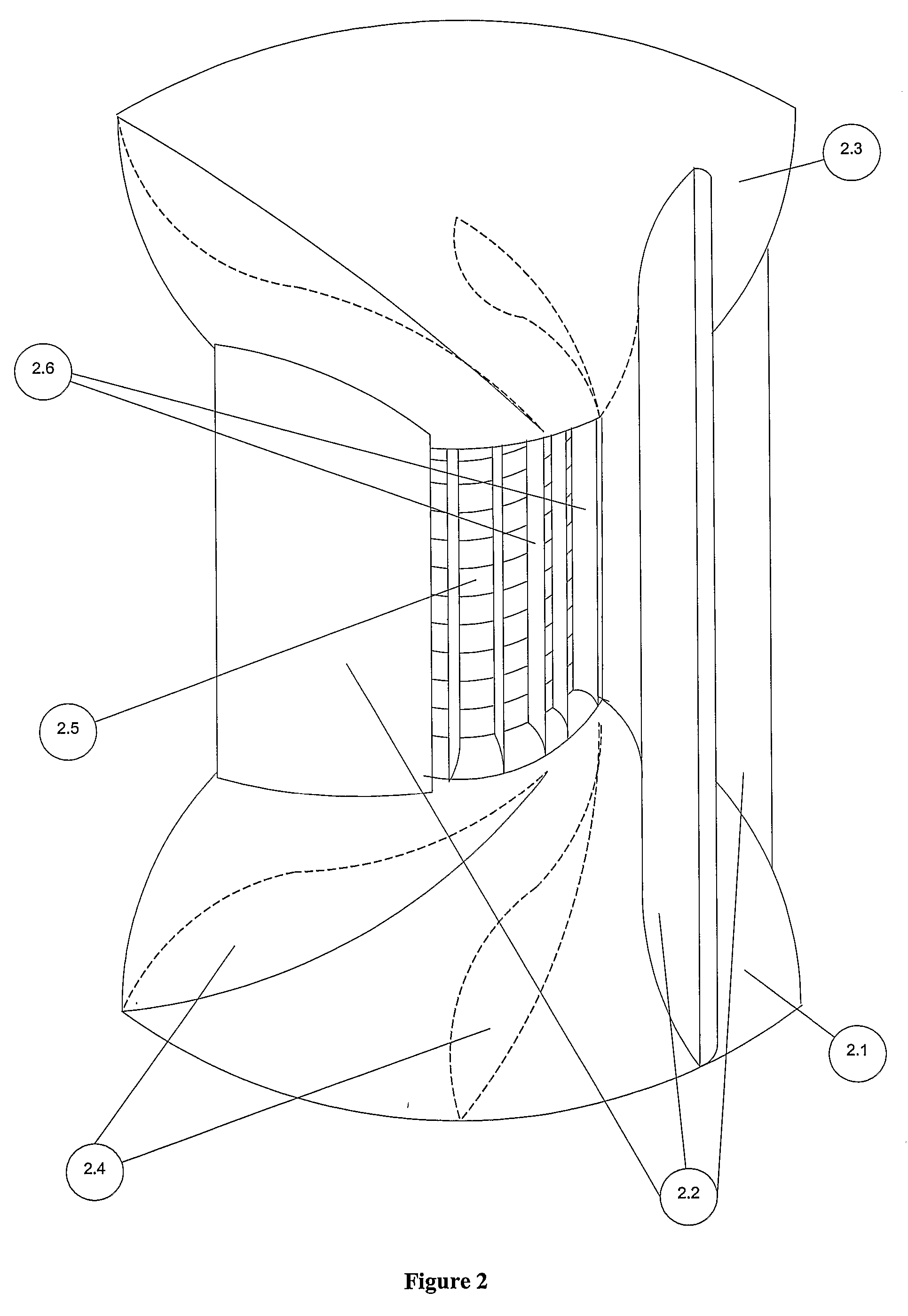Boundary Layer Wind Turbine
a wind turbine and boundary layer technology, applied in the direction of propellers, propulsive elements, water-acting propulsive elements, etc., can solve the problems of obscuring the landscape, needing an even horizontal air inflow, and affecting the safety of birds and air traffic, so as to achieve reliable and effective means, increase rotational velocity, and increase torque
- Summary
- Abstract
- Description
- Claims
- Application Information
AI Technical Summary
Benefits of technology
Problems solved by technology
Method used
Image
Examples
Embodiment Construction
[0035]FIG. 1 shows a vertical axis wind turbine as seen from exterior, where only the stator blades (1.2) are visible, according to a preferred embodiment of the present invention. The upper surface (1.1) and the lower surface (1.3) are shaped as hemispheres to create a maximum air inflow. These surfaces (1.1, 1.3) may alternatively be truncated cones or elliptical surfaces.
[0036]FIG. 2 shows the vertical axis wind turbine where two stator blades (2.4) were removed to make the rotor (2.5) visible. The presented stator blades orientation is counter clockwise. It will be understood of course that the orientation of the stator blades (2.2) and rotor blades (2.6) may be reversed to drive the turbine in a clockwise direction if desired.
[0037]FIG. 3 is a horizontal sectional view on the line A-A of FIG. 1, showing the disposition of stator blades (3.2) on the hemisphere lower surface (3.1) and around the rotor (3.3) as such that, regardless of the wind direction, the air inflow will be ...
PUM
 Login to View More
Login to View More Abstract
Description
Claims
Application Information
 Login to View More
Login to View More - R&D
- Intellectual Property
- Life Sciences
- Materials
- Tech Scout
- Unparalleled Data Quality
- Higher Quality Content
- 60% Fewer Hallucinations
Browse by: Latest US Patents, China's latest patents, Technical Efficacy Thesaurus, Application Domain, Technology Topic, Popular Technical Reports.
© 2025 PatSnap. All rights reserved.Legal|Privacy policy|Modern Slavery Act Transparency Statement|Sitemap|About US| Contact US: help@patsnap.com



